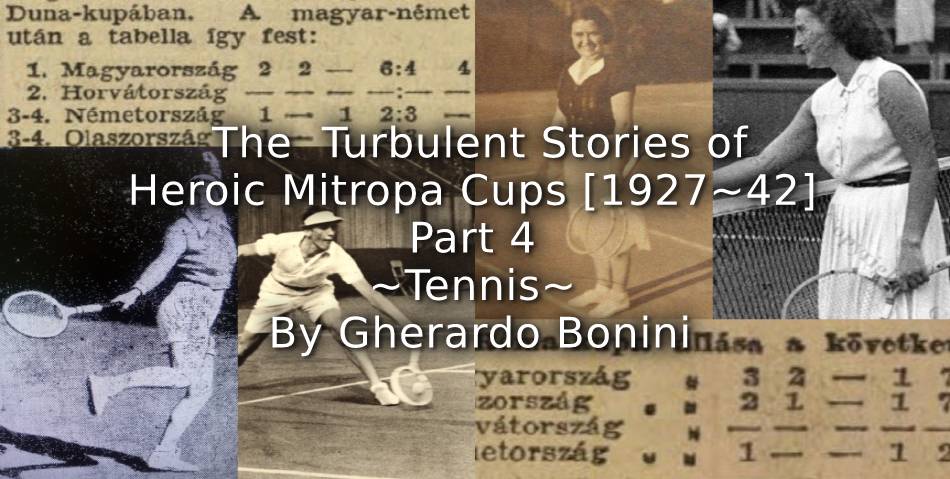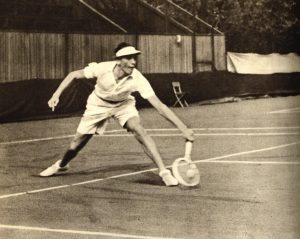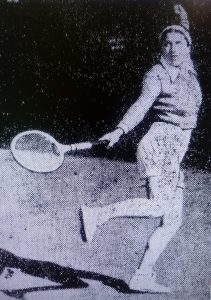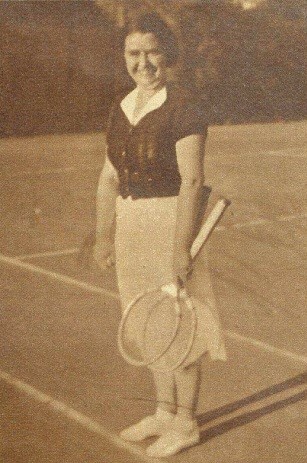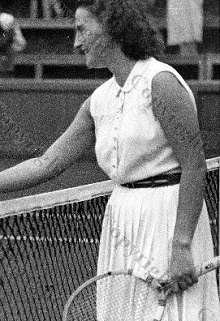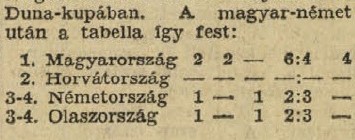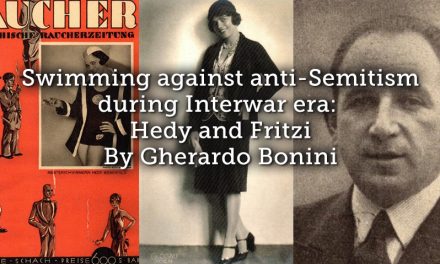For the previous parts of this series –
Part 1 [Football] – Click HERE
Part 2 [General Sport] – Click HERE
Part 3 [Boxing] – Click HERE
The last Mitropa Cup of Interwar era was that of tennis, which ended in the middle of the war in 1942. The tournament started in 1937 and suffered the effects of all dramatic changes of the period: first the Anschluss in March 1938 which caused the disappearance of independent Austria, then the dismemberment of Czechoslovakia that became a Bohemian-Moravian Protectorate, with Slovakia constituted an autonomous satellite state of Germany in March 1939, still the outbreak of war in September 1939, finally in 1941 the dissolution of Yugoslavia and the creation of the Kingdom of Croatia, a Nazi satellite state.
The former champion Bela von Kehrling launched the idea of the Mitropa Cup for tennis in May 1936. The Tournament wanted to be an outdoor version of the Sweden’s indoor King’s Cup, established precisely in 1936. The Mitropa Cup did not want to interfere with the Davis Cup, whose development at the time was concentrated between April and September. Furthermore, it was the only Mitropa Cup open to women. After the refusal by the international federation (FILT) of the Australian proposal to create a women’s Davis Cup, it was the main competition for women teams in Europe.
While the men’s tournament adopted the league formula of the International Cup of Football, taking place over two years with one-way matches, the women’s tournament was structured according to the Cup system, with direct elimination and the dispute in the solar year alone. The desire to create a Central European political and tennis block was strong. By advocating absolute amateurism, the member countries hoped for return of tennis to the Olympic program against the attitude of the Anglo-Saxon countries. Furthermore, the agreement provided that, on a rolling basis, year after year, the international championship of a contracting country would take the title of Middle European Championship (1). In 1937, the Tournament of Naples in Italy, held from 12 to 18 April, took on this title. The contracting countries undertook to send at least two men and two women to the international championships in each of the other countries. Unlike the Davis Cup, former professional and requalified amateur players, such as the Italian Palmieri and Hungarian Szigeti, could take the field in the Mitropa Cup.
- Count Adam Baworowski, member of Austrian Davis Cup team since 1932, after the Anschluss got back in native Poland, then a little pilgrimage became German citizen
Six nations competed in the first men’s edition, 1937/1938: Poland, Czechoslovakia, Hungary, Italy, Austria and Yugoslavia. The confrontations were held over six matches, four singles, with eight different players, two doubles. The draw was therefore possible. The participating countries threatened the first European positions held by France, Great Britain and Germany. Austria played the 1937 games regularly against Poland, Hungary and Yugoslavia. After the Anschluss, initially they Czechoslovakia and Italy got by office two points, without calculations of won/lost matches (just like 0 to 0), then also the other points obtained against Austria in 1937 were removed. Poland won the tournament before Czechoslovakia. The Polish victory showed one of the most significant features of the Mitropa Cup. Count Adam Baworowski started the Tournament representing Austria, ended it by winning it with Poland. The nationality changes became rapid and unproblematic.
-
Born in 1924, in October 1940 she was barred from playing tennis through Anti-Semitist Laws. Authorities allowed her to teach tennis until 1942, when another more stringent Law forced her into hiding and eventually escaping to Budapest. She was on the list of protected tennis players that King Gustav of Sweden negotiated with Nazi regime
(Népsport, 27 May 1945 – Népsport was the journal following Nemzeti Sport, it means People Sport).
In the women’s field, the Queen Mother of Yugoslavia Mary put up for grabs another Cup named after her. Despite the presence of Jadwiga Jedrezejowska (2), in Warsaw, Poland was defeated 3 to 2 by the Hungarians, who lined up the 14-year-old Jewish player Zsuzsi Körmöczy, in addition to expert Paksy. The Hungarian champion Klari Somogyi, who had represented Romania until 1937, was in that time suspended sub judice by FILT. Despite its liberality in cases of change of nationality, the Mitropa Cup could not clearly challenge the FILT.
- Jadwiga Jedrzejowska was the strongest Polish women tennis player of Interwar era and one of World best
In 1939, the men’s tournament did not take place. The women’s tournament was won by Yugoslavia who could, by toss, play both confrontations, against Italy and Hungary, at home in Zagreb. Yugoslavia could count on two excellent players Alice Florian and Hella Kovac.
-
Alice Florian played for Yugoslavia until 1941, then for Hungary.
After World War II, she married a German and represented Germany
In 1940, the war interrupted Davis Cup. In the men field, the more neutral Danube term replaced Mitropa term. The Danube Cup, played with the league formula, contemplated however the five matches as in the Davis Cup, and Yugoslavia prevailed over Italy and Hungary, winning the tournament. The Italian arrogance diversified the things, in view of a expected and grand European Championship that Rome wanted to organize in 1942. Thus the Rome Trophy E 42 (E meant just Europe) was born, which returned to the system of matches, four singles and two doubles, of the Mitropa Cup 1937/1938. In this tournament, Italy was at the top of the standings, but the crucial match against Hungary cannot be disputed. In the women’s field, Germany expressed the desire to enter the Mitropa Cup coupled with Queen Mary’s Cup. German squad comprised also Viennese players. In the semifinals, in Zagreb against Yugoslavia, Körmöczy secured the final to Hungary, but was not lined up in the final against Germany, both to please the political ally and to apply the Hungarian anti-Semitist restrictive law issued in the spring of 1940. In the final, Hungary, having available also Klari Somogyi, won in Berlin for 3 to 2.
In 1941, Yugoslavia disintegrated. The pro-fascist Croatia immediately participated in the men Danube Cup. At this point, Italian arbitrarism altered the tournaments. Since it was difficult, during the war, to manage two separate tournaments, the Rome Trophy took the place of the Danube Cup, after two matches of this competition were already held, with the Davis Cup scheme. The Danube Cup became the Rome Cup and continued with the six-match formula. Moreover, the Rome Expo Tournament meeting of 21/22 June won by Italy on Hungary for 5 to 1 was declared as valid for the Rome Cup. Despite these penalties, at the end of the year, Hungary, led by excellent player Josef Asboth, won the tournament. In the women’s competition, the Queen Mary had escaped in exile in London, the Cup summarized necessarily the only title of the Mitropa Cup and Germany imposed on Italy in the final in Wiesbaden .
Two clips from Hungarian journal Nemzeti Sport. First one extracted on 10 June issue presented the standing of Danube Cup (Duna Kupa) after two matches of tournament. Second one extracted from 30 June issue presented the standing of the same tournament but with changed title Rome Cup (Roma Kupa) and changed scoring system. The first two matches styled to Davis Cup (four single with two players of each team), second one re-took older Mitropa Cup system (four single with four players of each team, plus two doubles)
In 1942, the planned grand European Championship in Rome was not set up and only a few confrontations were played for the Rome Cup that remained unfinished. Baworowski played some matches for Germany. In the women Mitropa Cup final, Italy defeated Hungary in Budapest. The Italians lined up native German Annelies Ullstein, married Bossi, but until 1940 a German Mitropa player, who beat Alice Florian, who in the meantime became a Hungarian citizen.
Article © Gherardo Bonini
Notes
- Sport Tagblatt, 9 April 1937
- As Italian expert Alessandro Mastroluca remarks that credited Wallis Myers and John Olliff reckoned Jedrzejowsk as n. 3 of World

